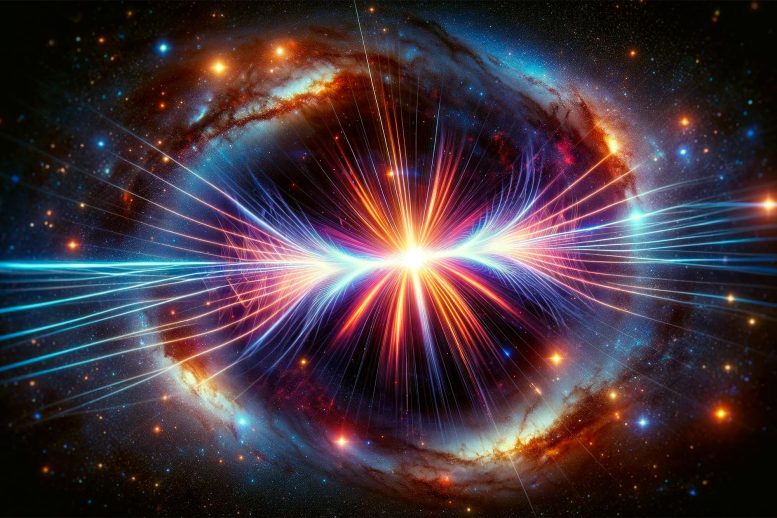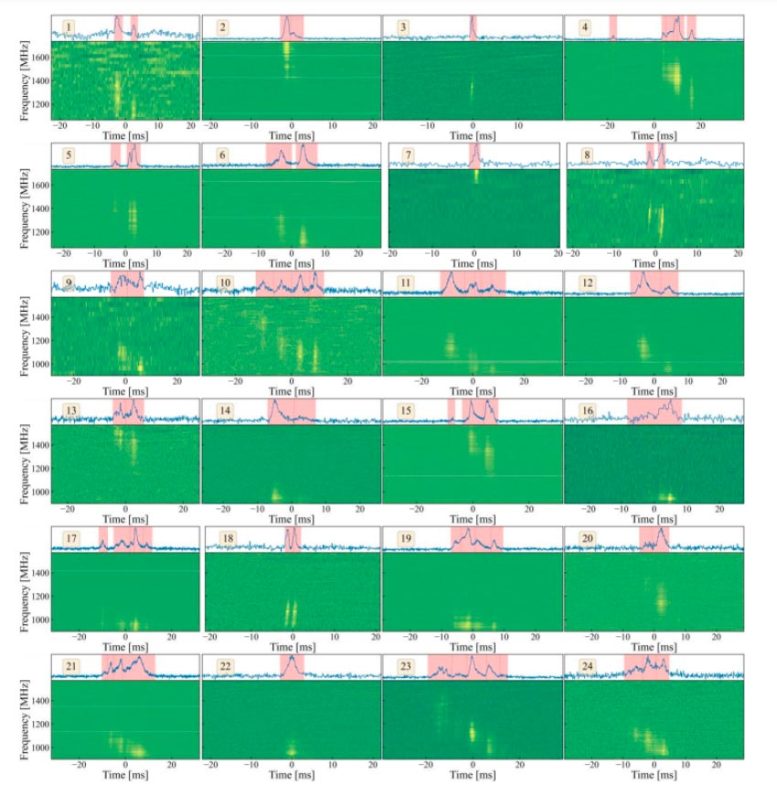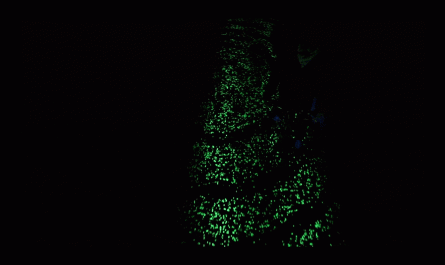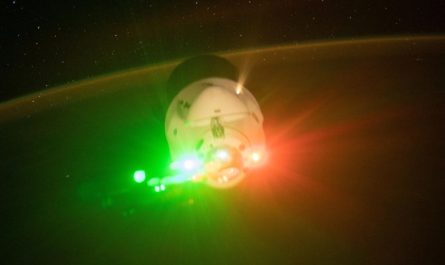

Astronomers have discovered unique patterns in a repeating Fast Radio Burst (FRB 20220912A), observed by the SETI Institute. This finding, described in the Monthly Notices of the Royal Astronomical Society, challenges existing models of FRBs, which are intense, short-lived radio signals from space. Credit: SciTechDaily.com
New research reveals a never-before-seen behavior in a repeating Fast Radio Burst, offering fresh insights into these mysterious cosmic phenomena.
Astronomers are continuing to unravel the mystery of deep space signals after discovering a never-before-seen quirk in a newly-detected Fast Radio Burst (FRB).
FRBs are millisecond-long, extremely bright flashes of radio light that generally come from outside our Milky Way galaxy. Most happen only once but some “repeaters” send out follow-up signals, adding to the intrigue surrounding their origin.
A new study published in the Monthly Notices of the Royal Astronomical Society has now shed new light on them, after spotting a “highly active” repeating FRB signal that is behaving differently to anything ever detected before.


Dynamic spectra (or “waterfall” plots) for all the bursts from FRB 20220912A detected using the Allen Telescope Array, the frequency-averaged pulse profiles, and the time-averaged spectra. Credit: Sofia Z. Sheikh et al., SETI Institute
Scientists at the SETI Institute in California recorded 35 FRBs from one source, FRB 20220912A, over a period of two months and found that a fascinating pattern emerged.
Like most repeating FRBs, each burst drifted from higher to lower frequencies over time.
But with FRB 20220912A there was also a never-before-seen drop in the center frequency of the bursts, revealing what sounds like a cosmic slide-whistle when converted into a sonification using notes on a xylophone.
In it, most of the highest notes can be heard in the first few seconds and the majority of the lowest ones in the final seconds, as if the xylophone player is repeatedly hitting the lowest available bar on the instrument.
Theories and Discoveries: A Step Closer to Understanding FRBs
Astronomers think at least some FRBs are generated by a type of neutron star known as a magnetar – the highly magnetized cores of dead stars – while other theories point the finger at colliding neutron star binaries or merging white dwarfs.
“This work is exciting because it provides both confirmation of known FRB properties and the discovery of some new ones,” said lead author Dr. Sofia Sheikh, of the SETI Institute.
“We’re narrowing down the source of FRBs, for example, to extreme objects such as magnetars, but no existing model can explain all of the properties that have been observed so far.”
This sound bite is a data sonification of the 101 sub-bursts observed with the ATA and analyzed in this work. The center frequency of each sub-burst is mapped to a xylophone note [in a one-octave A Lydian scale]. There is a lot of scatter in the notes, but most of the highest notes appear in the first few seconds, and most of the lowest notes appear in the last few seconds, as if the xylophone player is hitting the lowest available bar on the instrument repeatedly. We use statistical methods to verify that this trend from high to low is significant, and would likely continue if the ATA could observe at even lower frequency ranges (equivalent to ‘adding more notes’ at the bottom of the xylophone).
The researchers made their discovery after carrying out 541 hours of observations using the SETI Institute’s Allen Telescope Array (ATA).
They also tried to identify a pattern in the timings between the bursts but none was found, further illustrating the unpredictable and mystifying nature of these intense blasts of radio waves.
Nevertheless, the latest research is another step forward in the quest to unlock the secrets of FRBs, which generate as much energy in a thousandth of a second as our Sun does in an entire year.
“It has been wonderful to be part of the first FRB study done with the Allen Telescope Array (ATA) – this work proves that new telescopes with unique capabilities, like the ATA, can provide a new angle on outstanding mysteries in FRB science,” Dr. Sheikh added.
For more on this research, see Unlocking the Strange Puzzle of Fast Radio Bursts.
Reference: “Characterization of the Repeating FRB 20220912A with the Allen Telescope Array” by Sofia Z. Sheikh, Wael Farah, Alexander W. Pollak, Andrew, P. V., Siemion, Mohammed A. Chamma, Luigi F. Cruz, Roy H. Davis, David R. DeBoer, Vishal Gajjar, Phil Karn, Jamar Kittling, Wenbin Lu, Mark Masters, Pranav Premnath, Sarah Schoultz, Carol Shumaker, Gurmehar Singh and Michael Snodgrass, Accepted, Monthly Notices of the Royal Astronomical Society.
arXiv:2312.07756


